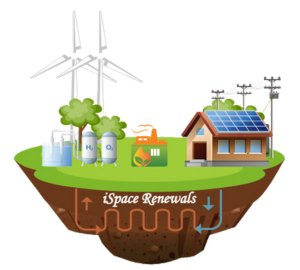Green hydrogen is a form of hydrogen produced using electricity derived from renewable energy sources such as wind, solar, etc. It is considered a low or zero-emission form of hydrogen as these energy sources do not release greenhouse gases during electricity generation. The production of green hydrogen involves the process of water electrolysis, which splits water molecules (H2O) into hydrogen (H2) and oxygen (O2) using an electric current.
Although the production of green hydrogen requires an energy input, the use of clean energy sources makes it a more environmentally-friendly option compared to gray or blue hydrogen production methods. The main challenge with green hydrogen is the cost of producing electricity through renewable sources, which can make the production process more expensive than other hydrogen production methods.
Despite the challenges, green hydrogen is considered a promising solution to reduce carbon emissions and transition towards a more sustainable energy system. Green hydrogen can be used in a variety of applications, such as transportation, industrial processes, and energy storage.

